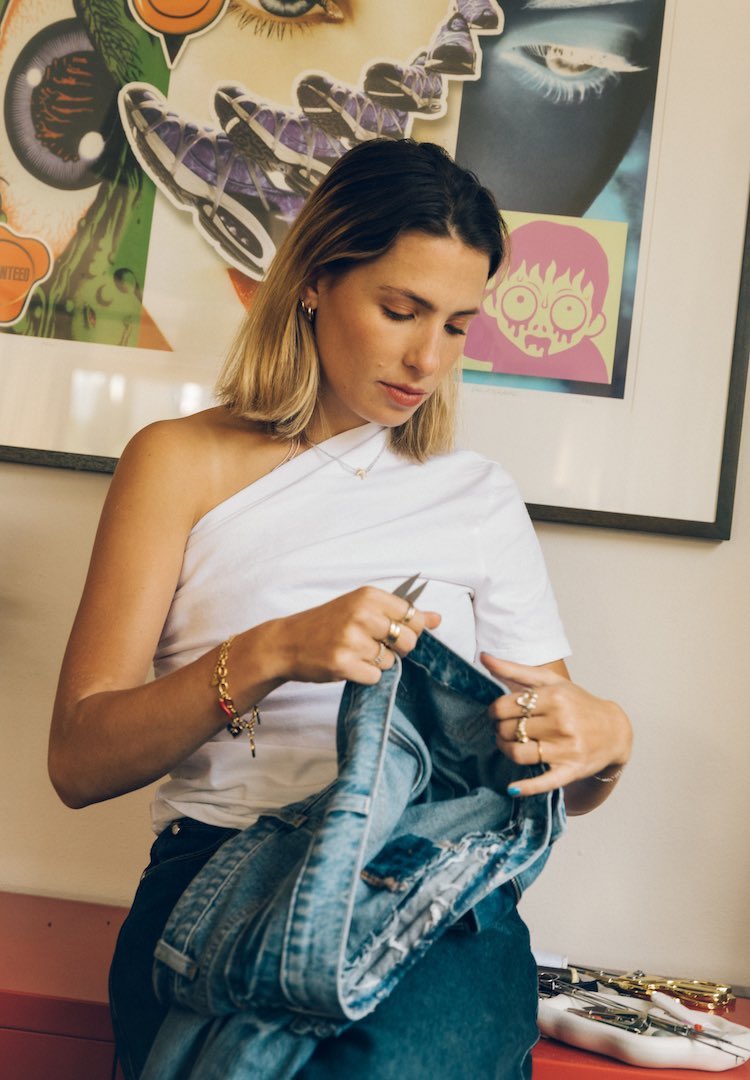What is a Chief Sustainability Officer exactly?
PHOTOGRAPHY BY CLAIRE SUMMERS FOR INTENT JOURNAL
WORDS BY TORI MATHISON
And why do we need them so desperately?
When social media initially blew up, there were hundreds of new roles created around curating a brand’s socials. The role of a Chief Sustainability Officer (CSO) came about in a similar way.
Introduced in response to consumers’ growing appetite for sustainable fashion, the role was a way that brands could not only do better but be seen to do better, too.
The fashion industry is wreaking havoc on the environment
The fashion industry produces 10 per cent of the entire planet’s carbon emissions, along with being the second-largest consumer of the world’s water supply. Given the fashion industry’s brutally slow recognition of its environmental impact, the CSO role is relatively new, which means it’s also a title that is constantly evolving.
In recent years we have seen retail businesses investing heavily in their brands’ online presence. This thriving e-Commerce climate has created new ways for businesses to engage with their customers, but it’s also raised concerns for how they manage the sustainability side of things behind the scenes.
When looking at environmental accountability, it’s about understanding both the impact and the influence. Big dogs like H&M, Nike, Adidas and Reformation have been some of the first to publicly bear allegiance to the fight for a climate solution with the introduction of CSOs.
But it’s also hard to gauge the long-term impact that they will have, assuming it isn’t just virtue signalling. It’s also worth noting that until all departments have radicalised their processes and priorities, no business can genuinely be considered truly sustainable.
So what does a CSO actually do?
By understanding the environmental impact at each stage of the supply chain, a CSO can build initiatives and suggest actions that will improve outcomes and working conditions. The overall target is to help a business reap the majority of its profits from products that address environmental and social issues.
New climate challenges and legislative frameworks will constantly influence business objectives, so it’s difficult to clarify a cut-and-dry definition of what a CSO does. So we spoke to one instead.
Jaana Quaintance-James is the CSO for online fashion retailer The Iconic, but was seven when her mum caught her trying to stuff treats into an envelope to send to Ethiopia during its first significant famine.
That altruistic streak never left her. As the CSO for a large stockist and in-house retailer, Jaana clarifies that the umbrella objective in her role is creating end-to-end processes for in-house brands, in order to help them better understand and mitigate the organisation’s negative social and environmental impact.
The sustainability framework at The Iconic is divided into four pillars. Firstly, ethical sourcing, which focuses on the social and environmental conditions in the supply chain. At this stage, it looks at the materials used in its products to ensure they’re of a sustainable standard, and if not, it finds ways to improve them.
Secondly, the environment. This is where you observe the most conventional environmental initiatives taking place – designing better waste management systems in the warehouses, switching to LED lights, as well as rethinking its approach to parcel management, materials and design.
Thirdly, community, where it assesses its contribution to wider society. For The Iconic, this has centred around social inclusion, helping those in need and environmental protection.
And fourthly, diversity and inclusion. This is how the business approaches acknowledging and celebrating the broad range of people and body types that exist in our world.
Jaana is tasked with setting policy standards within each branch. It would be hard enough if this was a purely internal exercise, but Jaana goes on to explain the significance of bringing in and keeping on relevant stakeholders, highlighting the importance of educating them on why these actions are so important for their organisation.
She laughs when I ask what she gets up to on a typical day. “There’s not really a typical day, to be honest… there’s a lot of different pieces of work going on. Just thinking about today, I have a number of different one-on-ones. For example, later today we’re running some supply training for The Iconic suppliers in China. So, it’s a digital training session which suppliers and factories will be joining.
“Obviously I have some media interviews, or managing comms, we’re also at the moment looking at our reconciliation action plan. And how our business will be more formally acknowledging and showing its respect in supporting Indigenous culture… so, it can be very diverse.”
Is the role effective?
At its core, the role of a CSO is about implementing systems and structures that will result in long-term positive change. It’s hard to imagine any negative arising from a seasoned professional entering a business with the sole goal of helping them recognise their shortcomings and how to improve them.
But like any position of authority, the role is only as effective as the company appointing it. How much authority the CSO has and their capacity to enact change is entirely dependent on the funding and influence granted by the organisation. It’s also where it becomes apparent how easy it is to “greenwash” through the appointment of a sustainability specialist.
If there is a genuine commitment, achievements can be substantial. With the recent revamp of its delivery satchels, The Iconic has converted its packaging to 100 per cent recycled materials, an action that Jaana was at the helm of.
“The bags are a really good project to consider because if you think about it, it’s a really cross-functional effort between operations, marketing and sustainability,” she says. Jaana explains that despite the positive progress around packaging, the design change considered multiple factors beyond aestheticism and the customer’s comprehension of sustainability.
“If we send you the product and it ends up damaged, that’s far worse from a social and environmental perspective than the packaging that we use to get it to you. So, the true impact is really inside the packaging. So it has to maintain its product protection role.”
In recent years numerous E-commerce businesses have converted to compostable packaging, but Jaana explains the flaw in this. “From a sustainability side, things are not simple… there’s actually a very small number of people in Australia who have composting at home. So, by putting compostable bags on the market every year, and people don’t have the means to compost it, it’s just going to end up in [a] landfill.”
Is it necessary to achieve sustainability?
On paper, a CSO seems like a buffer for any environmental flak a brand might cop. And in some ways, it probably is. As consumers, we like to see green stickers on our packaging because it makes us feel better about ourselves and our decisions, when really, so few of us investigate these claims further.
The change a CSO can enact is only as significant as the force driving it, and their worth to a corporation is only as great as the outcomes they are achieving.
In the same way that a CSO observes the supply chain, as consumers, we need to recognise our own role within it. By putting our money behind the brands and businesses that are implementing processes and policies that genuinely encourage sustainability, we are endorsing the positive changes that a CSO is putting in place.
It’s easy to be ignorant when we are a product of a grossly unsustainable retail culture, but if we expect big corporations to enact significant change, we need to demand it and recognise it too.
Looking to step up to a career in fashion? Each week we send a wrap of industry jobs straight to your inbox. Enter your details below and we’ll keep you in the loop, or browse current openings here.













